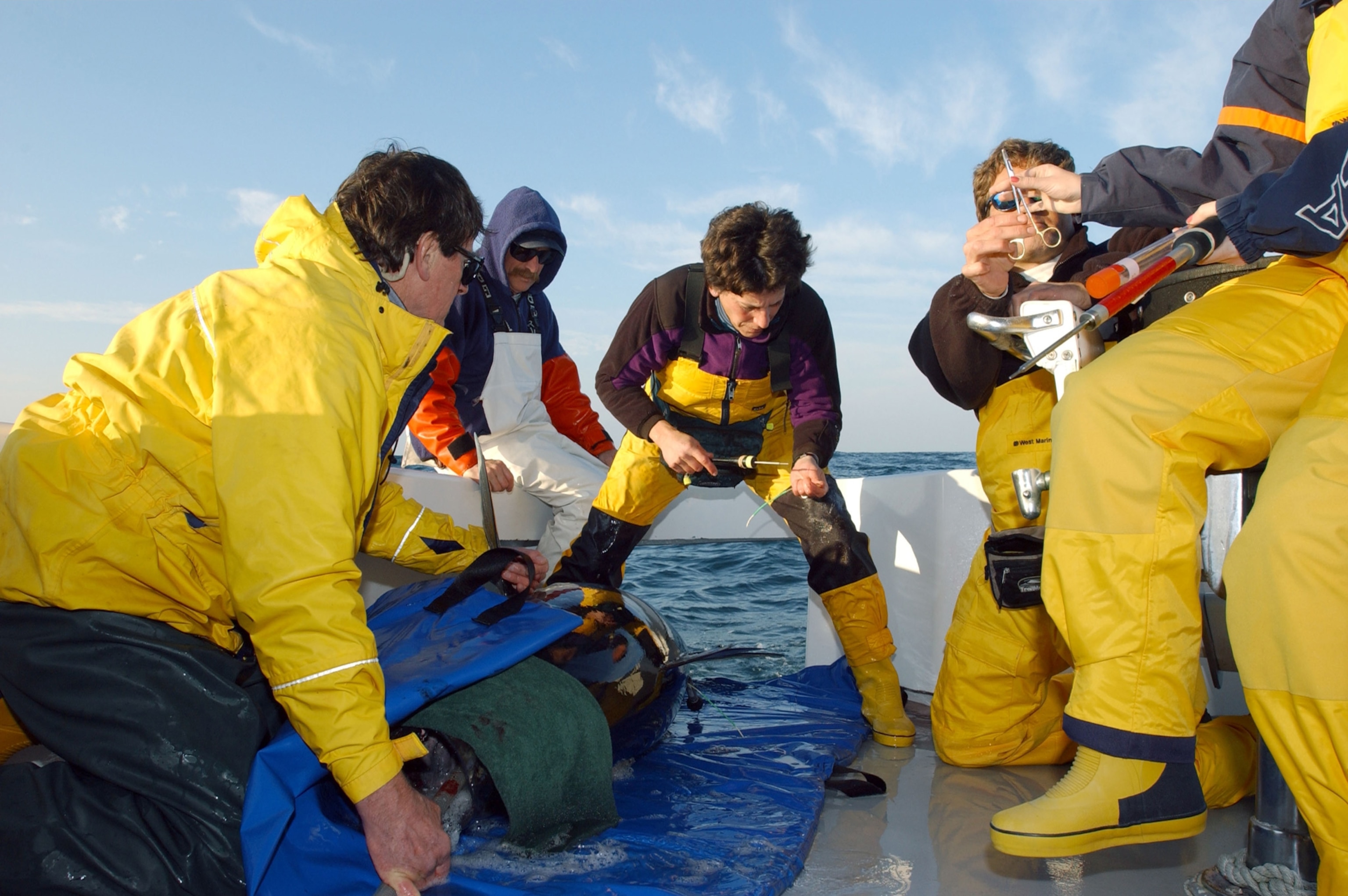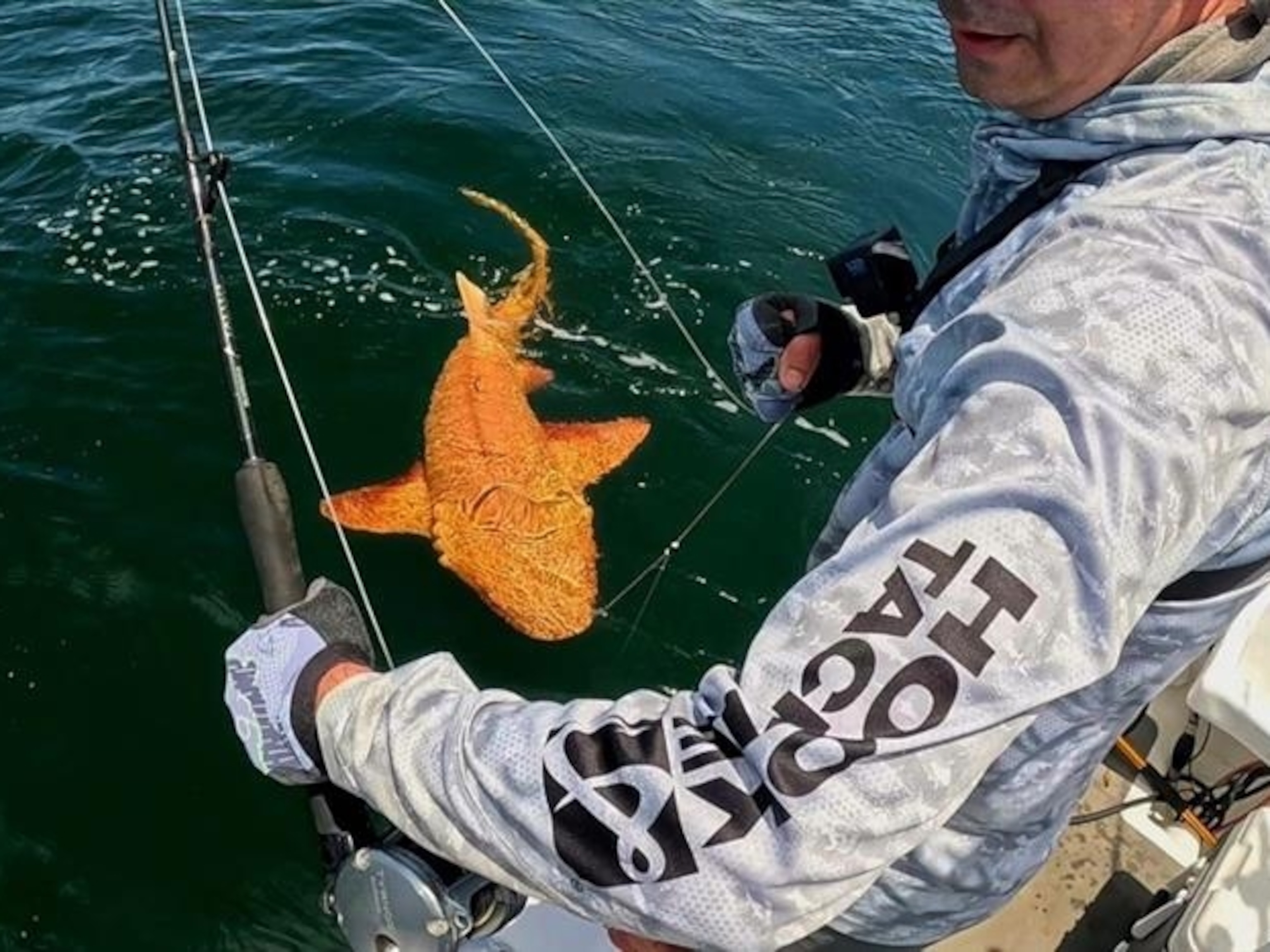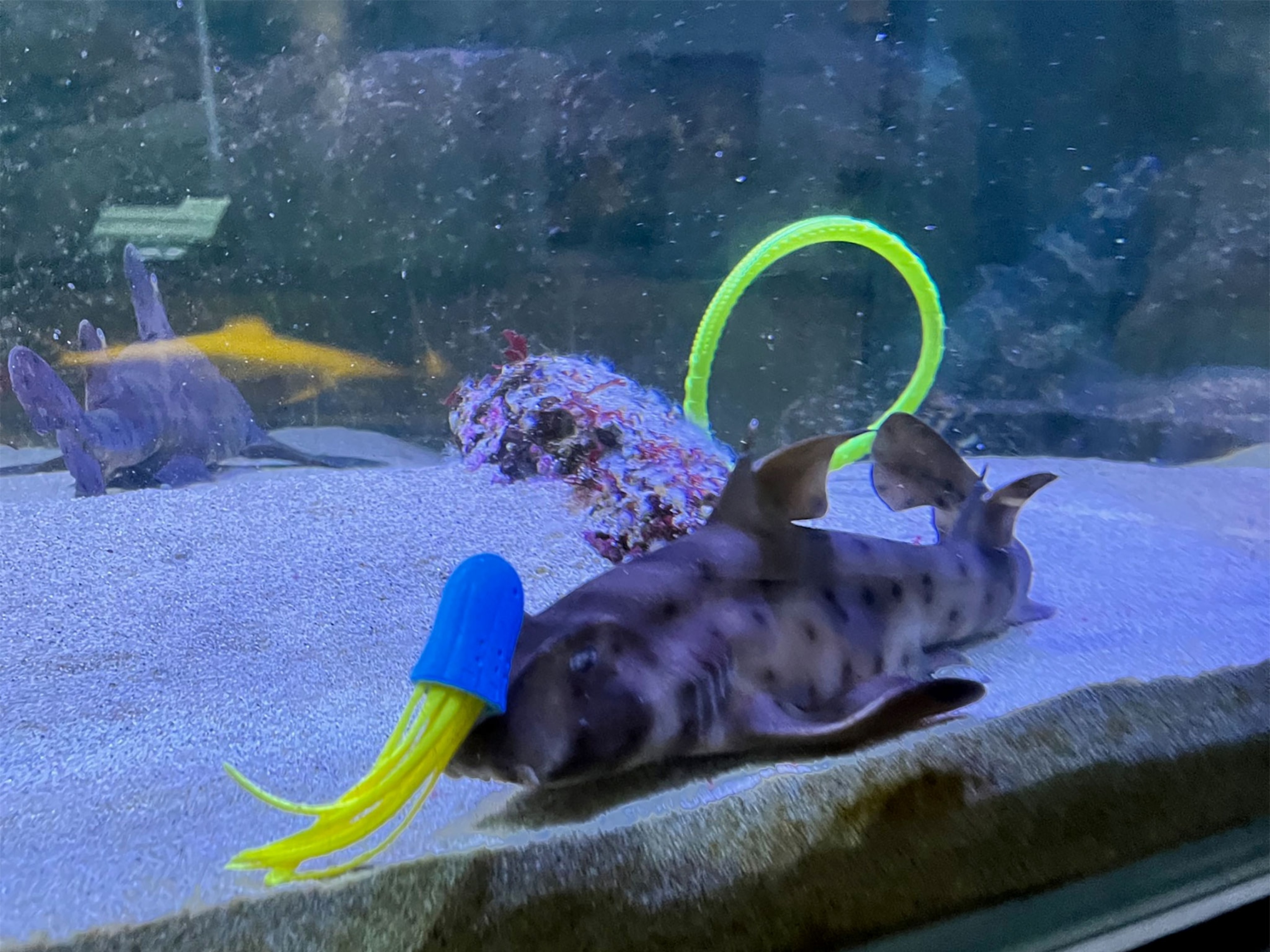Tracking the Secret Lives of Ocean Predators
Cutting-edge technology used by marine biologist Barbara Block is leading to more knowledge about sharks and bluefin tuna.
A vast treasure trove of information on the secret lives of ocean predators is being revealed through pioneering efforts to monitor the movements of sharks, billfish, and bluefin tuna using cutting-edge technology.
As co-chief scientist for the Census of Marine Life’s Tagging of Pacific Predators (TOPP) project, marine biologist Barbara Block helped to identify several marine hot spots, described as abundant hunting grounds for krill, sardines, squid, anchovies, and salmon. Out of TOPP came recognition of one of the world’s largest ocean migration areas, located off the northern California coast. Dubbed the Blue Serengeti, it was featured in a 2016 documentary of the same name.

“This area is equivalent to the biggest land parks in terms of size and diversity,’’ with fish that have migrated from as far away as Japan, says Block, a Rolex Laureate and National Geographic grantee.
Advances in camera and other technology have vastly expanded marine biologists’ knowledge of ocean predators. “What we’ve found is that, like clockwork, they come back to the same neighborhood,’’ Block says.
She adds that, as with land parks, these marine parks need conservation and protection to preserve the species within, especially the bluefin tuna. She’s currently trying to raise funds to develop antipoaching tags for the bluefin.
“The biggest problem is unregulated and illegal fishing,’’ she says. “We’re only just getting a handle on it through technology.”






